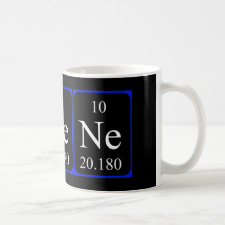
Authors: Papaioannou E, Liakopoulou-Kyriakides M, Papi R, Kyriakidis DA
Article Title: The role of different ions in molecular recognition process of C-terminal cholecystokinin pentapeptide in polymeric receptors.
Publication date: 2007
Journal: Amino Acids
Volume: 33
Issue: (3)
Page numbers: XXVIII-XXIX.
DOI: 10.1007/s00726-007-0578-0
Abstract: The production of molecularly imprinted polymers (MIPs) for the recognition of C-terminal cholecystokinin pentapeptide (CCK-5P) in the presence or absence of metal ions is reported. Metal ions play an important role in recognition process allowing the monomers to assemble around the template in protic solvents by ligand formation. The MIPs were prepared under the same molar ratio of template to monomers (acrylamide, N,N'-methylene bisacrylamide) in the presence or absence of nitriloacetic acid nickel complex (Ni-NTA). Subsequently the produced Ni-NTA polymers were washed with EDTA (pH 8) to remove the Ni2+ and incubated in aqueous solution of MgSO4, FeSO4, ZnSO4, CoSO4 or CuSO4 respectively at initial concentration 20mM in order to examine the contribution of these ions to recognition process. From the rebinding data, a Langmuir adsorption isotherm was obtained for each metal ion used and the subsequent Scatchard plot analysis showed that the above ions exhibited different dissociation constant values, KD. It was found that polymers containing the metal ion complex with the order Fe-NTA, Ni-NTA and Cu-NTA gave lower dissociation constant values and thus exhibit the stronger guest binding activity. The percentage of theoretical maximum binding sites Bmax is almost constant for these ions, meaning that the ion-template coordination is responsible for their binding strength and not for the number of active sites.
Template and target information: C-terminal cholecystokinin pentapeptide, CCK-5P



Join the Society for Molecular Imprinting

New items RSS feed
Sign-up for e-mail updates:
Choose between receiving an occasional newsletter or more frequent e-mail alerts.
Click here to go to the sign-up page.
Is your name elemental or peptidic? Enter your name and find out by clicking either of the buttons below!
Other products you may like:
 MIPdatabase
MIPdatabase









